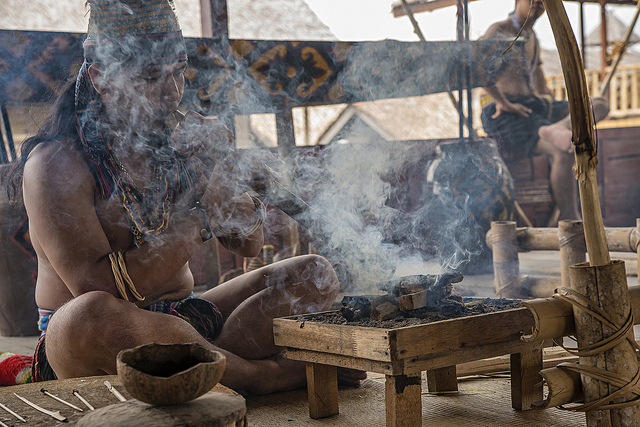It’s always polite to bring gifts to your hosts’ house, but when visiting a Sarawak longhouse make sure it’s something that’s easily shared, as longhouses are communal, and nearly everything gets divvied up into equal parts. This isn’t always an easy task: typically, longhouses are home to around 150 people and contain at least thirty family apartments, each one’s front door opening on to the common gallery, hence the tag “a thirty-door longhouse” to describe the size. These days not everyone lives there full time, but the majority of Sarawak’s indigenous Iban population still consider the longhouse home, even if they only return for weekends.
Many longhouses enjoy stunning locations, usually in a clearing beside a river, so you’ll probably travel to yours in a longboat that meanders between the jungle-draped banks, dodging logs being floated downstream to the timber yards. Look carefully and you’ll see that patches of hinterland have been cultivated with black pepper vines, rubber and fruit trees, plus the occasional square of paddy, all of which are crucial to longhouse economies.
Having first met the chief of your longhouse, you climb the notched tree trunk that serves as a staircase into the stilted wooden structure and enter the common area, or ruai, a wide gallery that runs the length of the building and is the focus of community social life. Pretty much everything happens here – the meeting and greeting, the giving and sharing of gifts, the gossip, and the partying. Animist Iban communities in particular are notorious party animals (unlike some of their Christian counterparts), and you’ll be invited to join in the excessive rice-wine drinking, raucous dancing and forfeit games that last late into the night.
Finally, exhausted, you hit the sack – either on a straw mat right there on the ruai, or in a guest lodge next door.
By Site Editor
October 18th, 2013
www.roughguides.com


